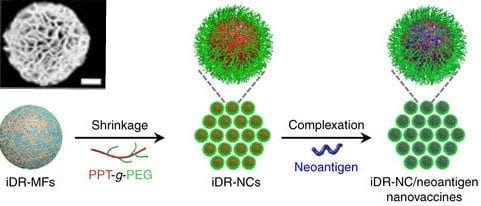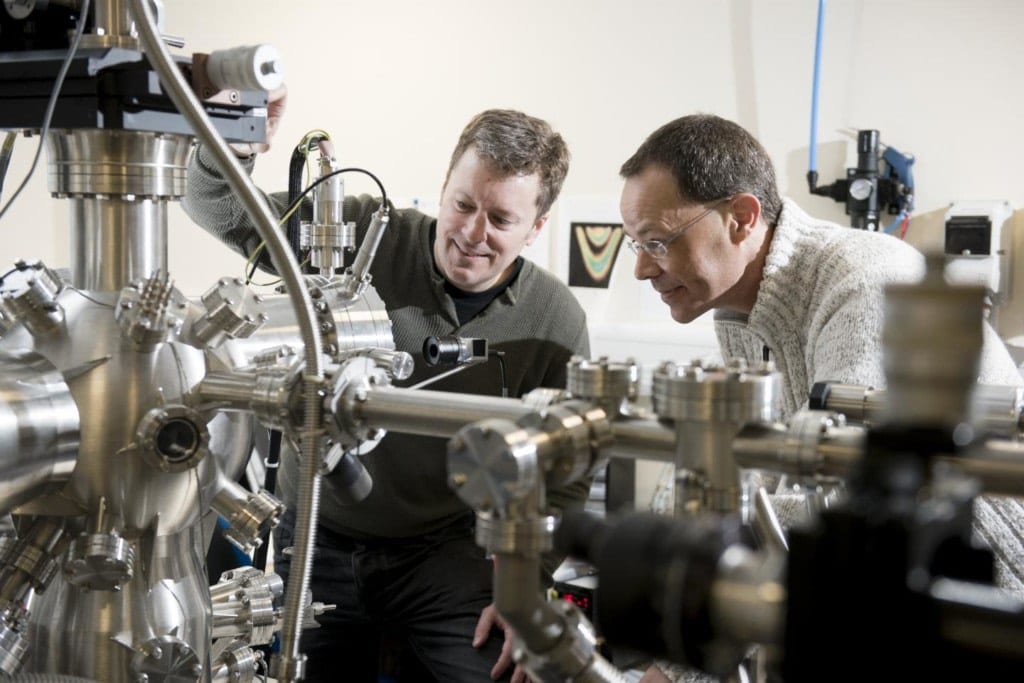
This entirely textile-based, bacteria-powered bio-battery could one day be integrated into wearable electronics.
Scientists Create Stretchable Battery Made Entirely Out of Fabric
A research team led by faculty at Binghamton University, State University of New York has developed an entirely textile-based, bacteria-powered bio-battery that could one day be integrated into wearable electronics.
The research team, led by Binghamton University Electrical and Computer Science Assistant Professor Seokheun Choi, created an entirely textile-based biobattery that can produce maximum power similar to that produced by his previous paper-based microbial fuel cells. Additionally, these textile-based biobatteries exhibited stable electricity-generating capability when tested under repeated stretching and twisting cycles.
Choi said that this stretchable, twistable power device could establish a standardized platform for textile-based biobatteries and will be potentially integrated into wearable electronics in the future.
“There is a clear and pressing need for flexible and stretchable electronics that can be easily integrated with a wide range of surroundings to collect real-time information,” said Choi. “Those electronics must perform reliably even while intimately used on substrates with complex and curvilinear shapes, like moving body parts or organs. We considered a flexible, stretchable, miniaturized biobattery as a truly useful energy technology because of their sustainable, renewable and eco-friendly capabilities.”
Compared to traditional batteries and other enzymatic fuel cells, microbial fuel cells can be the most suitable power source for wearable electronics because the whole microbial cells as a biocatalyst provide stable enzymatic reactions and a long lifetime, said Choi. Sweat generated from the human body can be a potential fuel to support bacterial viability, providing the long-term operation of the microbial fuel cells.
“If we consider that humans possess more bacterial cells than human cells in their bodies, the direct use of bacterial cells as a power resource interdependently with the human body is conceivable for wearable electronics,” said Choi.
Learn more: Scientists Create Stretchable Battery Made Entirely Out of Fabric
The Latest on: Wearable electronics
[google_news title=”” keyword=”wearable electronics” num_posts=”10″ blurb_length=”0″ show_thumb=”left”]- What is the ‘coastal cowgirl’ trend? Stylists explain the latest Western aestheticon April 27, 2024 at 6:00 am
Part of what makes this trend so wearable is the approachable color palette. You have the effortlessness of the classic coastal colors, with the richness and earthiness of Western accessories—truly ...
- 💻 Invention of a stretchable quantum dot displayon April 26, 2024 at 4:00 am
The quest to create inherently stretchable displays has begun. Traditional displays are limited by rigid and inflexible components. It is therefore imperative to find innovative materials and ...
- The Lundquist Institute Receives $2.6 Million Grant from U.S. Army Medical Research Acquisition Activity to Develop Wearable Biosensorson April 24, 2024 at 5:32 pm
The proposed sensor has the potential to not only revolutionize COPD management but also to impact healthcare by incorporating wearable electronics into chronic disease management Dr. Harry Rossiter, ...
- New research demonstrates potential of thin-film electronics for flexible chip designon April 24, 2024 at 8:00 am
The mass production of conventional silicon chips relies on a successful business model with large "semiconductor fabrication plants" or "foundries." New research by KU Leuven and imec shows that this ...
- Unlocking a US$ 3.7 Billion Opportunity: The Rise of Stretchable Conductive Material in Wearables Electronicson April 24, 2024 at 1:57 am
The stretchable conductive material market is expected to experience substantial growth during the forecast period. The market size is projected to reach US$ 3.7 billion by 2033, with a significant ...
- Opening up the potential of thin-film electronics for flexible chip designon April 23, 2024 at 5:00 pm
The mass production of conventional silicon chips relies on a successful business model with large 'semiconductor fabrication plants' or 'foundries'. New research by shows that this 'foundry' model ...
- Scientists stencil-paint carbon nanotube components for flexible transparent electronicson April 23, 2024 at 9:23 am
Researchers from Skoltech, MIPT, and elsewhere have found a fast and inexpensive way to create geometric patterns in carbon nanotube films. The resulting films turned out to have superior properties ...
- Ultrahuman to make its wearable rings in U.S.A.on April 23, 2024 at 4:58 am
Indian-based smart ring creator, Ultrahuman has announced its plans to open a manufacturing facility in the United States in an effort to accelerate its production capacity. The UltraFactory will be ...
- Wearable Material Market to Reach $7.4 billion, Globally, by 2032 at 12.2% CAGR: Allied Market Researchon April 23, 2024 at 1:16 am
Allied Market Research published a report, titled, "Wearable Material Market by Type (Silicon, Polyurethanes, Fluro elastomers) and Application (Consumer Electronics, Medical, Others): Global ...
- Wearable AI Market Breaking the Mold Uncharted Territory Techniques Reshaping Observational Researchon April 21, 2024 at 5:01 pm
Request To Download Free Sample of This Strategic Report @- Wearable AI consists of intelligent devices such as smart watches, smart earwears, smart eyewear, smart gloves and others. The wearable AI ...
via Google News and Bing News










